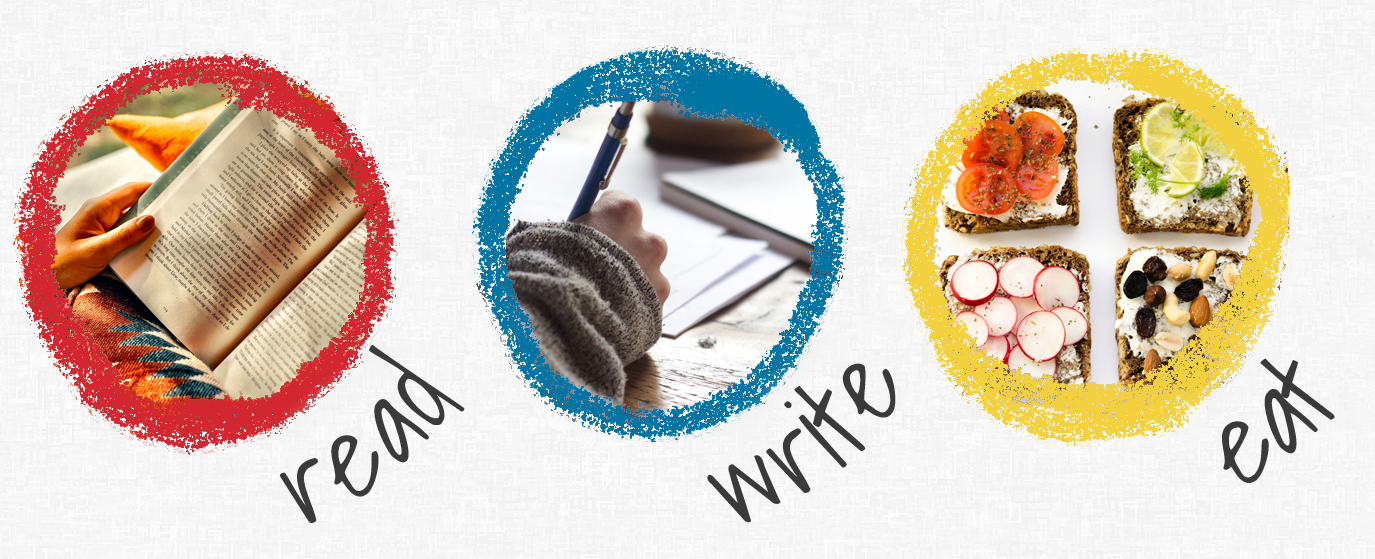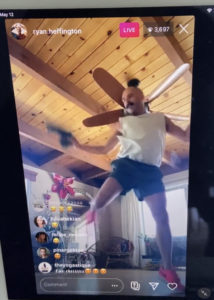Holy Crap!! It is Saturday afternoon as I write and who knows what will happen in the next three days before this note lands in your inbox. Chances are, whatever happens will be big, and this note will be coming to you from “the-before-time.” Every day it seems our country passes through another one-way-gate, from which there is no turning back.
I hope you are all well. I hope you are having adequate days. Drink water. Get outside if the air is decent. Put your feet up. Close your eyes. Repeat. We are going to need one another.
Meanwhile, I offer these suggestions to bring you solace and flashes of delight.

read
A few weeks ago, I invited you to join me in a virtual book group, you know, to hang out and discuss! A handful of you joined and I want to thank you for making me accountable to my own reading life. Not only am I getting through the book (which has been a little hard for me during the time-of-covid), but I’m marking up the pages and thinking hard about the newest Ferrante novel, The Lying Life of Adults. I’ve been putting up weekly posts on my Instagram page, and we have a zoom meeting planned to discuss in mid-October. Send me a note if you’d like to join in.
Meanwhile, I want to sing the praises of a new Lorrie Moore story, Face Time, from the 28 September issue of The New Yorker. The story is wry, funny and sad. Here’s how it begins:
I asked my father if he knew where he was and he said, “Kind of.”
“You are in the hospital. Your hip surgery went well. But there is a virus and you have been found to have it. You are contagious. No one can get near. It’s happening all over the world. You caught it in your assisted-living facility. The chef had it.”
Moore is one of my favorite writers. If you aren’t familiar, you’ve got a joy-filled winter of reading ahead of you. Here’s a page with all of her books. Birds of America and Bark are wonderful.

write
I’ve begun doing some blind contour drawing with one of my workshops. It’s great! We find a few minutes in each session to stare at an image and draw what we see, without looking at our hands or the page. The goal is freedom, to feel unattached to the outcome, to develop confidence in not knowing how things will turn out, to trust that you can make a beautiful line (or write a beautiful sentence), to relearn how to see, to unlearn ‘polite’ and ‘boring’ sentences, to defamiliarize the product.
Don’t take my word, here’s a great Letter of Recommendation about Blind Contour Drawing. Maybe it is something you’d like to incorporate into your writing practice?

eat
How could I have forgotten how much I love the blank canvas of Minestrone?!?
Several friends have recently been in need of dinner drop-offs. With wet and chilly weather, soup seemed the perfect choice. Enter: Minestrone. Adaptable to whatever is growing, vegetarian or laden with meat, it’s perfect. Here’s what I offer as a starting place:
Minestrone w/white beans and winter squash
- 1 cup dried white beans
- soak overnight
- drain and cover with abundant water
- cook at a med. simmer along with generous shakes salt and 4 whole cloves of garlic
- when beans are nearly tender, 75 minutes or so, remove garlic cloves
- 2 tablespoons extra virgin olive oil
- 1 medium onion, chopped
- 3-4 medium carrots, peeled and diced (1/2 inch dice or smaller if desired)
- 2 celery stalks, diced
- 4 tablespoons chopped fresh parsley
- 1 or 2 leeks, white and light green parts only, halved, cleaned well and sliced thin
- 3 or 4 garlic cloves (to taste), minced
- 1 14-ounce can chopped tomatoes, with juice
- 2 cups chicken stock OR water
- A bouquet garni made with a bay leaf and a couple of sprigs each parsley and thyme, tied into one of the leek leaves if desired
- Salt and freshly ground pepper
- 1 pound winter squash, (I love Butternut) peeled and diced
- Lots of chopped flat leaf parsley or basil (or both)
- Parmesan rind
- Freshly grated Parmesan for serving
- While beans are simmering prepare tomato base. Heat olive oil over medium heat in a heavy soup pot or Dutch oven, and add onion, carrot and celery. Add a pinch of salt and cook, stirring, until vegetables are just about tender, about 5 minutes, and add parsley and leeks. Cook, stirring, until leeks are slightly wilted, about 3 minutes, and stir in garlic along with another generous pinch of salt. Cook, stirring, just until the garlic smells fragrant, 30 seconds to a minute, and stir in tomatoes with their juice and salt to taste. Bring to a simmer and cook, stirring often, for about 10 minutes, until tomatoes have cooked down somewhat and smell fragrant. Toss in Parm rind for flavor. Remove from heat until beans are ready.
- Add beans and their broth, plus either 2c chicken stock or water, to tomato base, stir together, add bouquet garni and bring to a simmer. Cover and simmer over low heat for 30 minutes. Add winter squash and continue to simmer for another 30 to 45 minutes, until squash and beans are very tender. Taste, adjust salt, and add freshly ground pepper to taste.
- Just before serving heat through and stir in a generous handful of chopped fresh parsley or basil, or a mix of the two. Serve, topping each bowl with freshly grated Parmesan.
- Additions:
Italian sausage, seared and cooked through, sliced into rounds
Cooked chicken, cut to bite size pieces
Tortellini, cooked until just al dente
Kale or Chard, rinsed and julienned
Whatever you LOVE
Serve with a simple mixed green salad, a sliced up tart and crispy apple, some soft and delicious cheese, and hearty bread.











